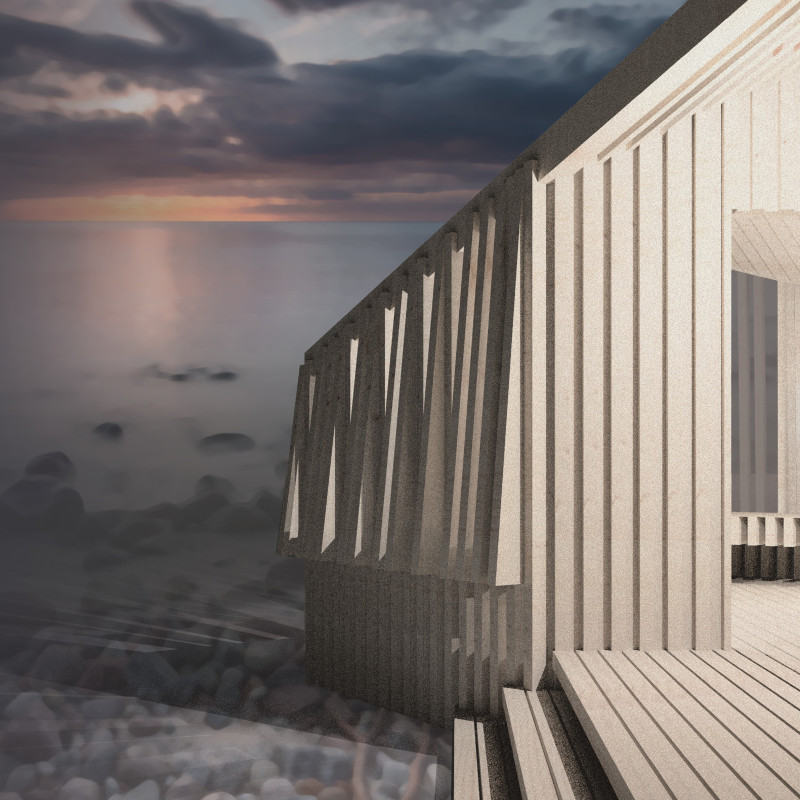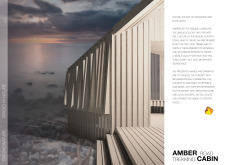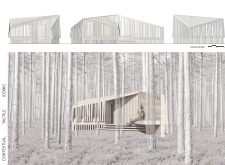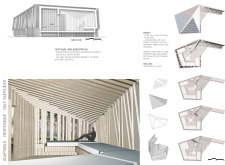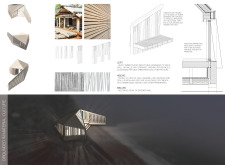5 key facts about this project
The architecture reflects a modern interpretation of traditional forms, employing clean lines and a well-defined silhouette that resonates with contemporary design sensibilities. The project represents a blend of practicality and innovation, responding effectively to the needs of its users while addressing wider environmental and social issues. At its core, the design prioritizes user experience and interaction with the space, suggesting an inclusive approach that invites engagement from various demographics.
Materials used throughout the project have been selected for both their aesthetic qualities and their performance characteristics. Concrete is prominently featured, chosen for its durability and versatility, allowing for both structural integrity and form exploration. The incorporation of glass enhances transparency and lightness, creating a seamless transition between the interior spaces and the environment outside. Wood elements introduce warmth and a tactile quality, promoting a sense of comfort and individuality within the architectural design.
The layout of the building is strategically organized to optimize functionality and flow. Public spaces are generously proportioned, encouraging community gatherings and fostering a sense of belonging. The design integrates flexible spaces that can adapt to various activities, ensuring that the architecture remains relevant and responsive to the dynamic nature of contemporary life. This versatility is a notable aspect of the project, allowing it to cater to different needs and events without compromising on the overall design ethos.
Unique design approaches are evident in the building's orientation and spatial organization, which take advantage of natural light and passive solar heating. This consideration provides an energy-efficient environment conducive to comfort year-round. The integration of sustainable practices exemplifies a commitment to environmental stewardship, with elements such as green roofs and rainwater harvesting systems working harmoniously within the architectural framework.
Landscaping plays a crucial role in this project, blurring the lines between built and unbuilt environments. Native plant selection ensures minimal maintenance while also enhancing biodiversity. Outdoor spaces are designed with the intent to serve as extensions of the interior, promoting outdoor activities and interaction with nature. This focus on landscaping enhances the overall aesthetic quality of the project and encourages a healthy lifestyle for its users.
Aspects like accessibility are woven into the design, ensuring that the project is welcoming to all individuals, regardless of mobility challenges. Thoughtful consideration has been given to circulation routes within and around the building, facilitating ease of movement and promoting inclusivity.
In essence, this architectural project stands as a notable example of thoughtful design and community engagement. By harmonizing functional needs with innovative architectural solutions, it effectively illustrates how contemporary architecture can serve broader societal goals while remaining grounded in the practicalities of everyday use. To gain deeper insights into the architectural plans, architectural sections, architectural designs, and architectural ideas of this project, readers are encouraged to explore the full presentation. Engaging with the details of this project will provide an opportunity to appreciate the depth of thought and creativity that has been poured into its design.


